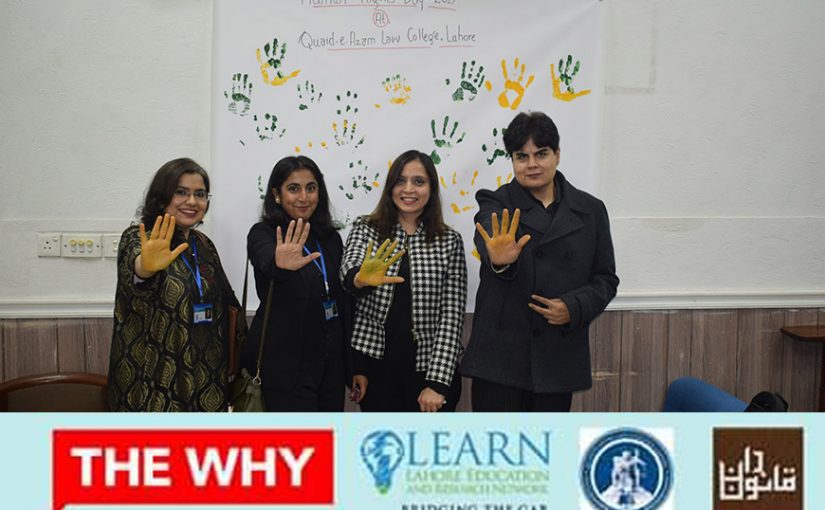
Human Rights in The Age of Climate Emergency & Toxic Air – Dec 10, 2019
We marked Human Rights Day 2019 at Quaid E Azam Law College with a half day conference on ‘human rights in the age of climate emergency and toxic air’.
We are indebted to Ali Mazhar of Ain Adab for opening our event with his riveting words of poetry written especially for the climate march 2019 in September. We thank him for re-presenting it for us at the session.
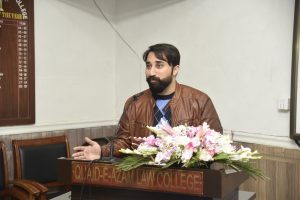
Pakistan is the 5th most vulnerable country on the climate impact index and given the poor air quality situation in the country which impacts not only the health, life and safety of its citizens but also hampers access to education and enjoyment of life and its quality for our children.
To draw attention to this important matter and to have the most common but pressing queries answered, we had with us Climate Change expert and legal consultant Sara Hayat, member of Climate Action Pk, Ms. Aysha Raja and three lawyers leading the climate litigation in Pakistan, Advocate Aneesa Agha, partner at RMA & Co and one of the leading members of Women in Law initiative, Environmental Lawyer Rafay Alam and Barrister Amir Zafar Khan.
Sara Hayat spoke about impact of climate change and the vulnerability of women to it. She shared her research related to gendered dynamics and impacts of climate change and concluded that climate change hits us all, but not equally – a point also established in short film produced by TheWhy Found ‘it started with a duck’ which was shown for the first time in Pakistan under our license with them. Sara highlighted not one but around five various impacts of climate change on women including but not limited to:
1. loss of income and livelihood due to impact of climate change on agriculture
2. climate induced migration and loss of privacy and family home and security of person
3. water shortages and walking for over 2 km everyday often more than once to provide water for domestic consumption and use, contributing to back aches, headaches and susceptibility to harassment along the way.
4. threat to life as less trained and equipped with life skills such as swimming in order to survive flood related catastrophes
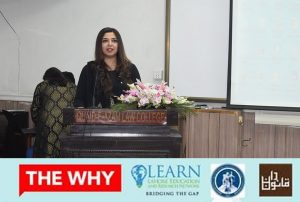
The video raises important questions of survival and adapting to combat climate change and secure the best possible chances of our livelihoods and existence in face of a looming crises.
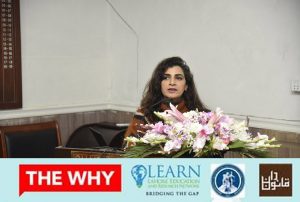
Aysha Raja gave an in-depth presentation on smog, what it is made up of (PM 2.5) and how dangerous that is for human health and life. She discussed in detail the air quality index and trained on how to read the air quality readings from the air visual app. She disclosed a number of action steps that we could take to reduce our individual as well as collective carbon footprint, of which the most paramount was the suggestion that we adopt mass transit and busses for commute to reduce dependency on cars given that fuel and transportation sector was the major cause of deteriorating air quality in Punjab. Ultimately, she encouraged the participants to get more involved and equipped to call for more robust action by concerned officials and authorities as far as implementing mitigation measures were concerned.
The panel discussion on climate litigation paved the way for a very interesting discussion on using enforcement of fundamental human rights via writ petition in the high court as a means to enforce climate related commitments and other actions.
Advocate Aneesa has filed a petition referring to Paris agreement and calling for reduction in emissions as agreed by the government citing impact of climate change on women.
Rafay Alam recently filed a case on behalf of children who are affected by air pollution of which one is a young professional athlete unable to train for her sport due to toxic air quality.
Barrister Amir’s petition focuses on quality of fuel being used in Pakistan which falls way below the cleaner fuel standards globally such as Euro 4 and onwards.
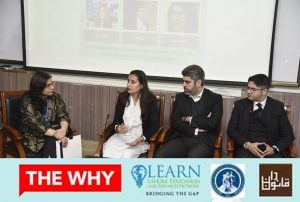
All three cases are subjudice and a final decision is awaited however, the panelists did explain the basis of their arguments and answered the question as to why a writ seeking enforcement of fundamental rights was adopted as the way forward to proceed in such matters, how the two were connected and what it tells us about course of environmental legislation in Pakistan, which is inadequate and ill-equipped to have the ‘teeth’ needed to make an impact in this grave matter of public importance.
Several myths were debunked during the conversation and a few participants engaged with the panelists bringing forth their local environmental issues and challenges. For instance, it was discussed how renewable energy was actually cheaper than fossil fuel based energy sectors and yet, it was not the sector which the government was tapping for meeting the demand for electricity.

A very interesting observation was in relation to how some of the historical and older environmental cases were discussed and their impact assessed on whether or not there is or ever has been an environmental movement of sorts in Pakistan and whether in contemporary days, its time had arrived. As agreed by all participants, there is clearly a lot more left to be desired on many levels of policy, implementation, funding as well as legislation to really bring these arguments to the heart of every development agenda in Pakistan.
A befitting closure to the day’s activities came in the form of circulation of a compilation by climate action pk on some of the leading but easy to read articles related to climate change and all the attendees leaving behind their handprints as a sign of commitment and pledge to human rights in the age of climate emergency and toxic air.
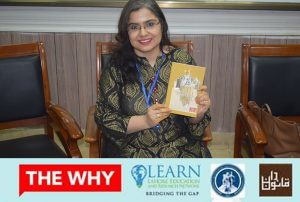
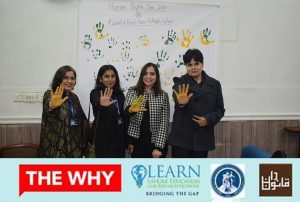
The event was covered by Qanoondan.
#TeamLEARN

